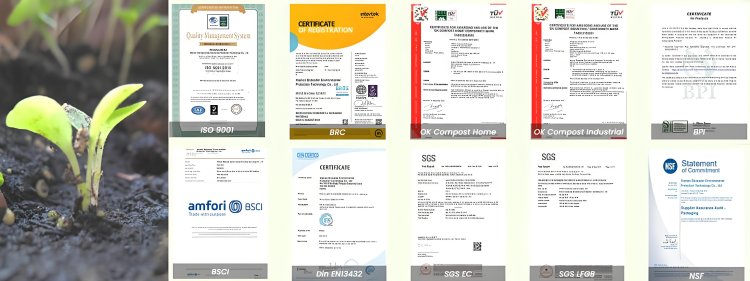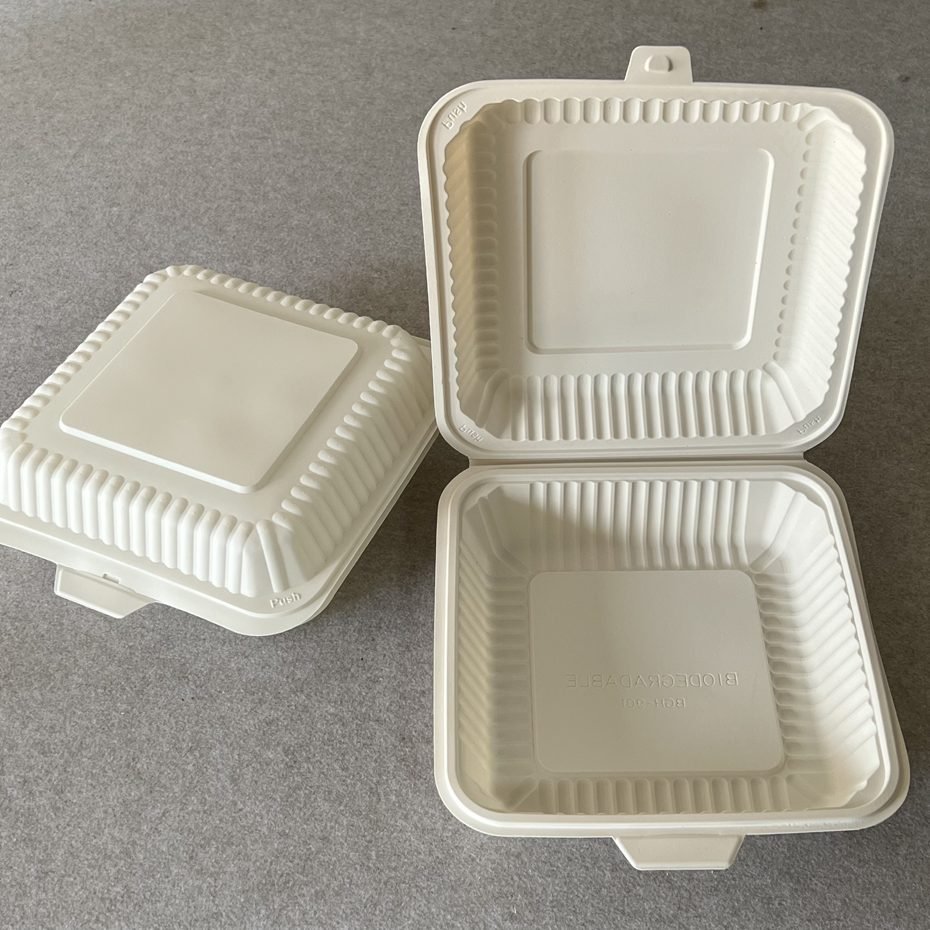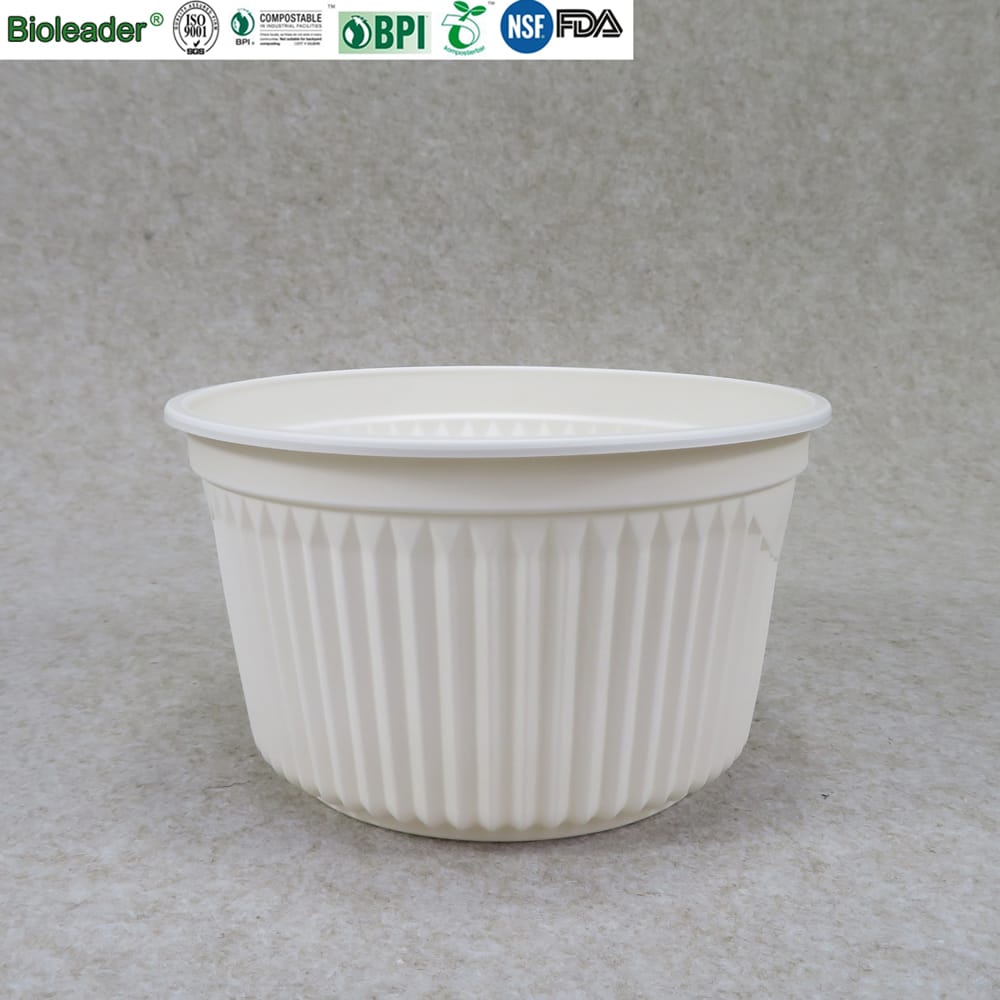90% of “Eco” Food Containers Contain Plastic—Yours Too?
Most food containers labeled “eco” or “biodegradable” still contain plastic. Learn the truth about cornstarch food containers, how to spot real biodegradable plastic food containers, and how to choose certified compostable options. Up to 90% of "eco" containers still contain plastic. Discover how to identify certified cornstarch containers and real biodegradable plastic food containers that meet composting standards.

Introduction: The Illusion of Green in Modern Food Packaging
Look around in any modern café, takeaway restaurant, or supermarket deli aisle. You'll find packaging labeled with words like eco-friendly, green, compostable, or biodegradable. The rise of these terms reflects a welcome shift toward sustainable awareness—but it also hides a dangerous trend: greenwashing.
Take the humble food container. Many are marketed as biodegradable, yet they still contain conventional plastic—often hidden within a lining or composite material. One of the most popular materials used to create “green” containers is cornstarch. But is a cornstarch container always biodegradable or compostable?
Spoiler alert: Not necessarily.
In this article, we explore the truth behind cornstarch food containers, how to distinguish real biodegradable plastic food containers, and why nearly 90% of so-called eco food packaging still contributes to plastic pollution.
What Are Cornstarch Containers?
Cornstarch containers are typically made from PLA (polylactic acid), a biopolymer derived from cornstarch. PLA is often lauded as a sustainable alternative to petroleum-based plastics, because it:
-
Comes from a renewable resource
-
Has a lower carbon footprint in production
-
Can biodegrade under industrial composting conditions
However, the story doesn’t end there.
The Catch:
-
PLA is not home compostable
-
It won’t degrade in natural environments (like landfills, soil, or oceans)
-
It requires high heat and oxygen levels only available in industrial composting facilities
In short, just because it's a cornstarch container, doesn't mean it’s truly eco-friendly.
Research Insight: Why Most “Biodegradable” Packaging Fails
According to a 2022 study by Environmental Packaging Alliance,
88% of food containers labeled “eco” or “biodegradable” in the U.S. contained synthetic plastics or failed compostability tests in industrial settings.
In particular:
-
52% of containers had hidden PE (polyethylene) linings
-
31% contained PLA without certification or instruction for disposal
-
Only 12% met compostable standards under EN 13432 or ASTM D6400
So, if your takeaway packaging includes cornstarch food containers, check whether they’re certified biodegradable plastic food containers—or just another layer of greenwashing.
Biodegradable vs. Compostable vs. Plastic-Free
| Term | Meaning | Compostable? | Microplastics? | Certification? |
|---|---|---|---|---|
| Biodegradable | Breaks down over time | Maybe | Often yes | Rare |
| Compostable | Breaks down in 90 days in a composting environment | Yes | No | Must be certified |
| Plastic-Free | No fossil fuel-based polymers | Yes | No | Usually yes |
Unless your cornstarch food containers come with labels like BPI Certified, OK Compost, or EN 13432, they’re probably not compostable—even if they claim to be.
What Real Biodegradable Plastic Food Containers Look Like
To be truly sustainable, biodegradable plastic food containers must:
-
Be made of plant-based materials like cornstarch, bagasse, or bamboo
-
Have no PE or petroleum-derived linings
-
Break down completely in commercial composting (or ideally home composting)
-
Leave no microplastic or toxic residue
Look for certification:
-
✅ EN 13432 (EU standard for industrial compostability)
-
✅ ASTM D6400 (U.S. equivalent)
-
✅ OK Compost HOME (for household compost systems)
-
✅ BPI Certification (North American third-party label)
The Industrial Composting Dilemma
Even certified cornstarch containers require access to composting infrastructure. But here’s the problem:
Only 15% of U.S. cities have access to commercial composting programs that accept PLA or other bioplastics.
In most regions, these containers end up in landfill, where they:
-
Fail to degrade due to lack of oxygen and heat
-
Release methane, a potent greenhouse gas
-
Contaminate recycling streams when disposed of incorrectly
The Environmental Impact of Bioplastics (When Done Right)
When used correctly, biodegradable plastic food containers can:
-
Reduce fossil fuel use by up to 65%
-
Lower greenhouse gas emissions over their lifecycle
-
Support a circular economy through composting systems
-
Minimize microplastic generation
According to the Bioplastics Europe Project (2023), replacing traditional PP/PE containers with certified compostable containers could:
-
Reduce food packaging waste by 43%
-
Improve compost soil quality by 18% due to fiber integration
-
Boost consumer trust and willingness to pay by 22%
What to Ask Before You Buy
Before ordering your next batch of "green" packaging, ask your supplier:
✅ Is the container 100% plastic-free or certified compostable?
✅ Can it be composted at home or only industrially?
✅ Does it include a compostable or recyclable lid?
✅ Are disposal instructions clear for customers?
✅ Is the packaging backed by EN 13432, ASTM D6400, or BPI?
If the answer to any of these is “no” or “not sure,” you're likely dealing with non-compostable plastic disguised as eco-friendly packaging.
Sourcing Tip: Where to Find Certified Cornstarch Containers
For truly sustainable solutions, partner with suppliers who offer certified biodegradable plastic food containers made from cornstarch or plant fibers.
Recommended: Xiamen Bioleaderpack Co., Ltd.
Why Bioleaderpack?
-
Offers certified cornstarch food containers and PLA-free options
-
Products meet ASTM D6400, EN 13432, BPI, and OK Compost standards
-
Options include single-, double-, and multi-compartment containers
-
Leak-proof, microwave-safe, freezer-friendly
-
Global supply chain and OEM/private label capabilities

Real-World Example: A Café’s Packaging Overhaul
A sustainable coffee chain in Germany switched from misleading "biodegradable" packaging to certified cornstarch containers from a vetted supplier.
In 6 months, they:
-
Diverted 3.2 tons of packaging from landfill
-
Saved €5,000 on mixed waste disposal fees
-
Improved composting compliance across 4 cities
-
Increased customer satisfaction and return rate by 17%
Top 5 Google Questions About Cornstarch Food Containers
1. Are cornstarch containers really biodegradable?
Only if certified. Many cornstarch food containers require industrial composting. Always look for labels like EN 13432 or BPI.
2. Can cornstarch containers go in the home compost bin?
Most can’t. PLA-based containers (common in cornstarch products) need high heat. For home use, choose OK Compost HOME certified products.
3. Are cornstarch containers microwave-safe?
Yes—most are heat-resistant up to 100–120°C. Always confirm with the supplier or manufacturer.
4. Do cornstarch containers break down in landfills?
No. Like most biodegradable materials, cornstarch requires oxygen and microbes—conditions not present in landfills.
5. Where can I buy certified biodegradable plastic food containers?
From verified suppliers like Xiamen Bioleaderpack Co., Ltd., which provides certified, plant-based containers in bulk.
Final Thoughts: Green-Looking Isn’t Green Enough
It’s easy to assume that “biodegradable” or “cornstarch-based” equals sustainability. But real impact demands more:
-
Certified compostability
-
Plastic-free linings
-
Functional compost systems
-
Consumer education on disposal
If your business is serious about reducing waste, it’s time to stop guessing—and start demanding proof.
Your containers say eco—can they prove it?
What's Your Reaction?


















.jpg)
.jpg)


